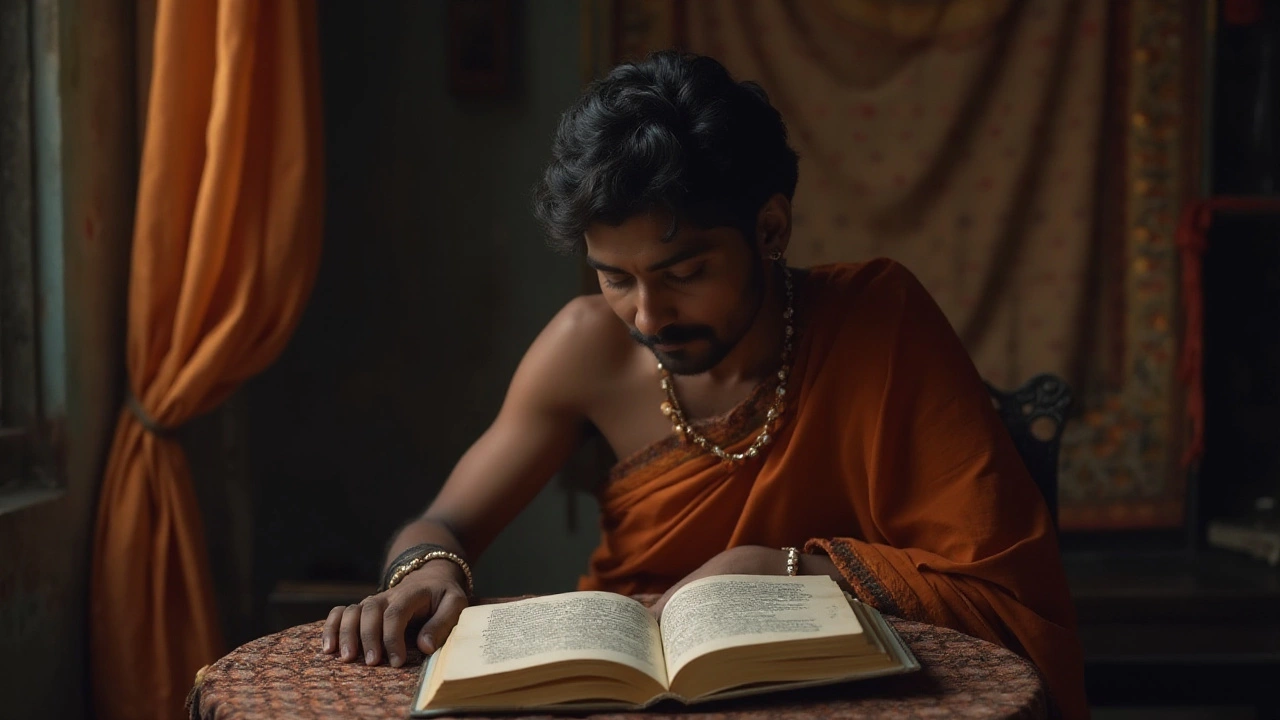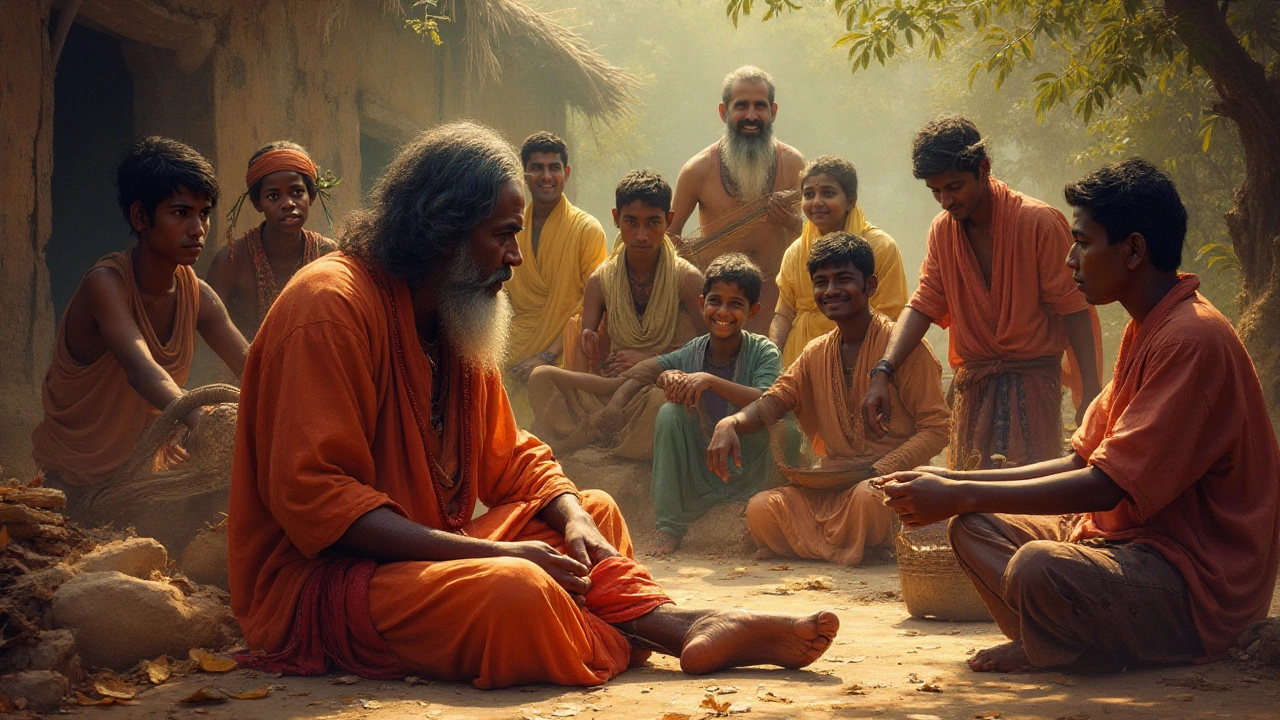
In the rich and diverse landscape of Indian poetry, certain voices stand out for their ability to articulate the overwhelming depths of human sadness. When we think of poets whose work has been steeped in tragedy, one name often echoes loudly within the literary halls of India.
Renowned not just for their eloquent verses, but also for the profound emotional connections they forge with readers, this figure has etched an indelible mark on the heart of Indian literature. Their poetry offers solace to those who have known deep sorrow, providing a mirror to the nuanced facets of human grief.
This article seeks to illuminate the life and work of the tragic poet whose verses continue to captivate and console. Through examining their poetic themes and the impact these have left on Indian literature, readers can gain unique insights into a legacy defined by both beauty and pain.
- The Identity of India's Most Tragic Poet
- Themes and Styles in Their Poetry
- Impact on Indian Literature
- Tips for Understanding Tragic Poetry
The Identity of India's Most Tragic Poet
Among the multitude of poets who have graced the annals of Indian literature, one figure towers above others in terms of their emotional depth and mastery over melancholic expressions. This tragic poet, revered for their ability to weave heart-wrenching sorrow into every line, is known for crafting poetry that not only reflects personal anguish but also resonates universally. The poet's name often mentioned in this context is Mirza Ghalib, whose contribution to Urdu poetry remains unparalleled. Ghalib's work is marked by a profound introspection and an exquisite articulation of the myriad shades of heartache. His experiences of loss and longing imbue his poetry with a unique poignancy, making him a cherished figure among lovers of *sad poetry*.
Mirza Ghalib lived during a time of great upheaval in India, amidst the decline of the Mughal Empire and the rise of British colonization. Born Mirza Asadullah Baig Khan, Ghalib experienced personal tragedy from an early age, which significantly shaped his worldview and his poetic voice. He lost his father at a young age, and later, all seven of his children died in infancy. These personal sorrows, compounded by the political instability of his time, crafted a lens through which he examined life with a blend of cynicism and yearning. He often expressed a difficult relationship with fate, questioning the divine sense of justice.
"The world is the body and its life is the soul, and the poet becomes the physician," said Ralph Russell, a noted scholar of Urdu literature, while discussing Ghalib's understanding of life.
The nature of Ghalib's theme often deals with the impermanence of relationships and the inevitability of loss. His ghazals, a poetic form known for its intricate structure and emotional range, frequently delve into the pain of unrequited love, the sufferings of separation, and the solitude within human bonds. His ability to capture the essence of sorrow with elegance and simplicity has made him a beacon for those exploring sorrowful poetry. With lines that reflect a deep philosophical understanding of grief, Ghalib's work transcends the realm of personal lament to touch universal truths about the human experience. His ghazals remain celebrated for their delicate blend of pathos and wisdom, serving as a testament to the timelessness of his tragic vision.
In addition to his literary achievements, Ghalib's influence extends to his role as a cultural icon. In the challenging socio-political landscape of 19th century India, his poetry became a form of resistance as well as introspection, offering space for reflection amid societal changes. His reputation for being poignant and perhaps too personal arose from his daring candidness to voice what many felt but feared to express. Even today, his legacy continues to inspire poets across generations, cementing his place as India's most tragic, yet beloved, poet. For those seeking to understand the depth and beauty of Indian literature, an exploration of Ghalib's work is an enlightening journey one must embark on.

Themes and Styles in Their Poetry
When delving into the poetic universe created by India's most tragic poet, themes of melancholy and despair often surface prominently. These pieces are imbued with a deep-seated sorrow, reflecting the complex tapestry of human emotions that are both universal and timeless. The poet's verses explore existential questions, the fragility of life, and the inevitable passage of time, painting a portrait of a world where happiness is fleeting, and grief looms large. Such themes resonate with readers across generations, offering solace in shared experiences of loss and longing.
The poet's style is marked by a confluence of simplicity and profoundness, a testament to their ability to weave complex emotions with effortless grace. Their words often carry a lyrical quality, drawing readers into a musical cadence that mirrors life’s symphony of emotions. This poetic cadence is matched by vivid imagery, evoking scenes that capture the essence of pain and resilience. It’s not just what is said, but also what is left unsaid, that lends their work an air of mystery and depth. In their verses, one finds an authentic representation of vulnerability, where the rawness of emotion is laid bare with poignant honesty.
"Poetry is when an emotion has found its thought and the thought has found words." - Robert Frost
Another defining attribute of this tragic poet's work is their nuanced use of language, combining traditional forms with innovative expressions. Their ability to play with words and metaphors adds layers to their poetry, allowing for multiple interpretations. This duality enriches the reader's experience, encouraging them to explore the text with both heart and mind. Themes of love and separation are explored with elegance, giving rise to verses that are both haunting and beautiful. Such mastery of language ensures that the poet's work remains as relevant today as it was during its inception, a true testament to their enduring legacy.
The intersection of personal and cultural introspection is also evident in the poet's work. Often, they draw upon the rich cultural ethos of India to inform their sad poetry. This adds a dimension of authenticity and relatability, as readers find reflections of their own cultural heritage echoed within the verses. The poet's introspective nature surfaces in subtle ways, prompting readers to engage in their own contemplation about life's myriad complexities. Such an invitation to introspection holds significant appeal, as people around the world find solace and camaraderie in shared human experiences through the vehicle of poetry.
Recurring motifs in the poet's works include nature as a metaphor for human emotion. Nature’s cycles of renewal and decay often mirror our emotional journeys, a theme skillfully employed by the poet. This connection to nature evokes a sense of introspection, suggesting a world where human experience is deeply intertwined with the natural order. Readers are drawn into a literary landscape where the rustle of leaves, the passage of seasons, and the fall of rain find symbolic resonance with the tears and laughter of human life. These motifs become the canvas upon which the poet paints their most heart-wrenching themes, providing a recurrent anchor for their poetic expressions.

Impact on Indian Literature
The profound influence of India's most tragic poet resonates deeply within the realm of Indian literature, leaving a legacy that has shaped literary expression for generations. This poet's work, characterized by an intense exploration of the human condition, has not only enhanced the emotive depth of poetry but has also set a benchmark for what constitutes melancholic beauty. Their verses, often steeped in longing and loss, have paved the way for future poets to explore similar themes with greater sensitivity and understanding. Such exploration has enabled Indian poetry to cultivate a unique voice that speaks to universal human experiences, while rooted in the cultural tapestry of India.
One of the most significant impacts of this tragic poet is the way they have influenced the thematic directions of Indian literature. Their ability to weave intricate emotions into words encourages deep introspection among readers and fellow poets alike, inspiring successive generations to explore beyond the superficial layers of happiness into the core of human grief. This exploration offers a cathartic journey not only for those who read, but also for those who dare to write about life's most tragic moments. In fact, the poet's oeuvre lays bare the raw and unfiltered aspects of life that, although painful, possess an undeniable beauty in their stark authenticity. This ability to capture and articulate the unspoken sorrows of life has added a new dimension to the Indian literary landscape.
Their writings have also left an indelible mark on how Indian poetry is studied and appreciated beyond its borders. Advancing a deeper appreciation for culturally rich expressions of sadness, their influence extends into the academic spheres, where literary scholars often uphold their works as exemplars of poignant tragic poetry. This not only enriches the curriculum for students of literature but also ensures that the poet's voice remains a cornerstone in discussions about emotive writing. Furthermore, the poet's influence is evident in the various adaptations and translations of their work, which have allowed a broader audience to access and appreciate the depth of Indian literary sorrow. The widespread acclaim and respect for the poet's body of work are testament to their enduring legacy.
"In every trace of silence, their verses echo the heart's deepest lament, unveiling a beauty that transcends words." - A renowned literary critic.
This poet's emphasis on expressing the nuances of human grief has also encouraged a shift in how contemporary poets approach writing. Their legacy invites poets today to peel back layers of personal experience and imbue their work with raw honesty, creating a literary movement that values vulnerability and authenticity. Through these contributions, the poet has undeniably shaped the landscape of Indian literature, cementing their place as a beacon of melancholic eloquence within the historical canon.

Tips for Understanding Tragic Poetry
Diving into the world of tragic poet India involves navigating through the deep currents of human emotion and experience. Understanding tragic poetry requires more than just reading the words; it demands a connection on an emotional level. To truly appreciate this form of art, one must start by immersing themselves in the cultural and historical context in which the poetry was written. India, with its rich tapestry of traditions and transitions, provides a backdrop that deeply influences its literary outputs. When one takes the time to explore the historical events and personal circumstances that shaped the poet's experiences, it adds layers of meaning to their words.
One approach is to focus on the themes that permeate tragic poetry. Common themes include loss, unrequited love, existential despair, and life's fleeting nature. By identifying these recurring motifs, readers can begin to see the interconnectedness of the poet's personal struggles with universal human experiences. Consider how these themes relate to your own life or historical events from India and abroad, as this can enhance empathy and understanding. Reading critical analyses or biographies can also provide new perspectives and insights, allowing a reader to appreciate subtleties they might have missed initially.
"Poetry is when an emotion has found its thought and the thought has found words." – Robert Frost
Another tip is to embrace the emotional intensity that tragic poetry often brings. Allow yourself to feel the sadness and despair woven into the verses. This might sound daunting, but it is in these profound emotions that beauty often lies. When a poet captures the essence of anguish so effectively, it is because they have tapped into a deep well of shared human sorrow. Listening to or attending readings of tragic poetry can help in experiencing the intended emotional delivery. The rhythm, intonation, and cadence of a poem, when heard, can evoke emotions that aren't as easily felt when reading silently.
Exploring the Structural Elements
In addition to themes, understanding the structural elements of tragic poetry can greatly enrich a reader’s appreciation. Tragic poetry from India may often employ specific forms such as ghazals or couplets, each offering unique challenges and rewards. The specific structure can lead to intensifying the sorrowful message through its constraints. Pay attention to the use of metaphors, imagery, and symbolism. These devices often serve as a bridge between the poet's internal world and the reader’s interpretation. For instance, the recurrent use of nature in poetry might symbolize the permanence of human suffering amidst the transience of life.
Finally, practice patience and allow yourself time to reflect after reading. Sometimes the full impact of a tragic poem isn't immediate but unfolds slowly as you mull over the images and emotions it evokes. Journaling your thoughts and reactions can serve as a personal dialogue with the text, offering new insights with each reading. Engaging with forums or book clubs that focus on poetry can also provide new perspectives and foster a deeper understanding through shared discussions. Through these approaches, the profound beauty of tragic poetry can be truly appreciated, transforming what is at first a solitary experience into a richer tapestry of shared human expression.